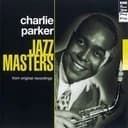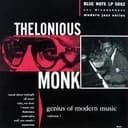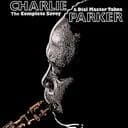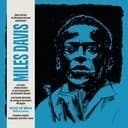Formula, Intervals, and Symmetrical Structure
The F half-whole diminished scale follows the intervallic formula H-W-H-W-H-W-H-W, producing the notes F-Gb-Ab-A-B-C-D-Eb. This creates a symmetrical structure where each pitch class repeats at intervals of a minor third (3 semitones). The scale contains four diminished triads (F°, Ab°, B°, D°) and four diminished 7th chords, all sharing identical interval content when inverted.
Due to this symmetrical property, only three unique half-whole diminished scales exist in Western music. The F half-whole diminished scale shares its exact pitch collection with Ab, B, and D half-whole diminished scales—they are enharmonic transpositions of the same intervallic pattern. From the root F, the scale contains a minor 2nd (Gb), minor 3rd (Ab), major 3rd (A), augmented 4th/diminished 5th (B), perfect 5th (C), major 6th (D), and minor 7th (Eb), creating dense chromatic clusters ideal for dissonant color tones over diminished harmony.
This intervallic density distinguishes it from more diatonic jazz scales like the Dorian mode, offering pianists a wealth of chromatic passing tones and approach notes. Understanding which keys share pitch collections helps avoid redundant practice—mastering the F diminished scale simultaneously develops facility in Ab, B, and D.
Application in Jazz Improvisation Over Diminished 7th Chords
The half-whole diminished scale functions primarily over diminished 7th chords (dim7 or °7), where it provides all four chord tones plus four rich tensions: the major 2nd, perfect 4th, major 6th, and major 7th above the root. When improvising over Fdim7 (F-Ab-Cb/B-Ebb/D), the F half-whole diminished scale adds Gb, A, C, and Eb as color tones, creating sophisticated voice leading opportunities. This makes it indispensable in bebop, hard bop, and post-bop jazz contexts where diminished chords serve as passing harmonies or pivot chords for modulation.
Jazz masters like Charlie Parker, John Coltrane, and McCoy Tyner extensively employed half-whole diminished vocabulary in their improvisations, particularly during ii-V-i progressions where diminished chords substitute or embellish dominant functions. The scale's symmetrical nature allows for pattern-based improvisation that sequences predictably through the four diminished 7th chord inversions. Pianists can create cascading eighth-note lines that outline multiple chord tones while incorporating chromaticism, a hallmark of modern jazz piano language.
Unlike the whole-half diminished scale used over dominant 7th chords, the half-whole pattern avoids the natural 7th that would clash with a diminished 7th chord's double-flat 7th (or major 6th enharmonic). This makes it essential to distinguish between these two octatonic scales in jazz contexts. Combining the F half-whole diminished scale with approaches from the blues scale or melodic minor scale can create compelling stylistic hybrids in contemporary jazz improvisation.
Practice Techniques and Fingering Strategies
For pianists, developing fluency with the F half-whole diminished scale requires systematic fingering approaches that accommodate its symmetrical structure. A recommended fingering pattern ascending from F is: RH 1-2-3-1-2-3-4-5 (F-Gb-Ab-A-B-C-D-Eb), which maintains comfortable hand position while navigating the alternating intervals. Practice ascending and descending patterns in different rhythmic groupings—triplets, sixteenth notes, and quintuplets—to internalize the scale's feel. The symmetrical nature means fingering patterns repeat at minor third intervals, so the same fingering template works for Ab, B, and D starting points.
Effective practice incorporates backing tracks or drones on Fdim7 chords, allowing you to hear how scale degrees resolve and create tension against the harmony. Practice connecting scale tones to chord tones by emphasizing F, Ab, B, and D (the diminished 7th chord notes) on strong beats while using Gb, A, C, and Eb as passing or approach tones. Experiment with intervallic patterns—thirds, fourths, sixths—to break linear thinking and develop more sophisticated melodic vocabulary.
Incorporate the scale into standard jazz progressions where diminished chords appear, such as the turnaround progression (Imaj7-VI7-ii7-V7) where the bVI dim7 often substitutes. Practice modulating between the three unique diminished scales (C, C#, and D collections) to prepare for real-world harmonic contexts. Combining this work with bebop major scale and harmonic minor scale studies creates a comprehensive jazz improvisation toolkit.
Relationships to Other Scales and Harmonic Context
The F half-whole diminished scale forms an essential pair with the F whole-half diminished scale, which reverses the interval pattern (W-H-W-H-W-H-W-H) and functions over dominant 7th chords rather than diminished 7th chords. While both are octatonic and symmetrical, their harmonic functions differ significantly: half-whole emphasizes the diminished 7th chord color, while whole-half emphasizes altered dominant tensions. Understanding this distinction prevents common improvisation errors where players use the wrong diminished scale over a given chord type.
The scale's relationship to the chromatic scale is noteworthy—the half-whole diminished scale is essentially a filtered chromatic scale that omits four pitches (G, Bb, C#, E in the F collection), creating a more structured approach to chromaticism. This connection helps pianists understand how to transition between fully chromatic passages and diminished scale runs. Additionally, the scale shares pitch content with various modes of the harmonic minor and melodic minor systems, particularly when analyzing altered ii-V-i progressions common in jazz.
In harmonic function, diminished 7th chords often serve as passing chords, secondary dominants (acting as viidim7 of a target chord), or substitutes for dominant chords. The half-whole diminished scale's ability to navigate these functions makes it more versatile than strictly diatonic scales like Mixolydian mode. Jazz composers and arrangers frequently use diminished harmony to create smooth voice leading between diatonic chords, and improvisers fluent in half-whole diminished vocabulary can follow these harmonic pathways with confidence. Studying its relationship to Locrian mode and Phrygian mode reveals common tones and approach strategies for navigating modal jazz compositions with diminished color.





